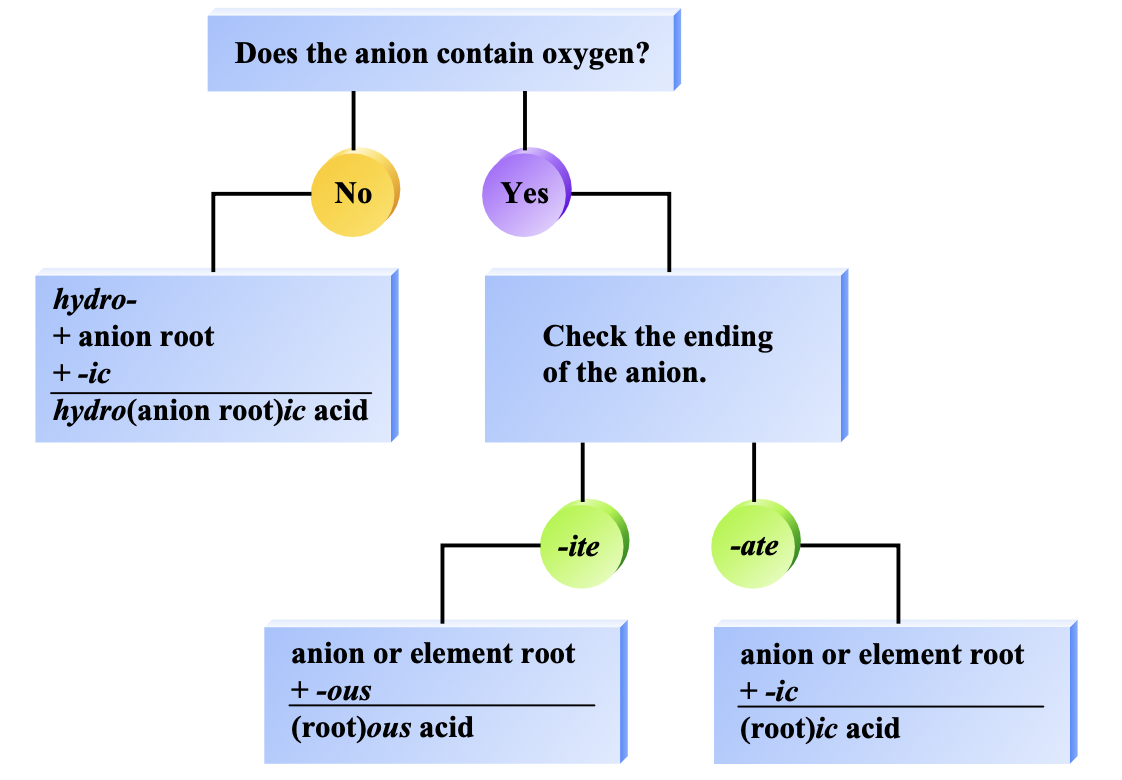Modern View of the Atom
In the last article, we talked about the history of the atom. Now we'll go over the modern view of the atom.The modern atom consists of a tiny nucleus with a diameter of about \(10^{-13}\) cm and electrons that 'orbit' around the nucleus at a distance of about \(10^{-8}\) cm. The nucleus of the atom consists of protons with a positive charge and neutrons with no charge. Both protons and neutrons have roughly the same mass while electrons have a much, much smaller mass.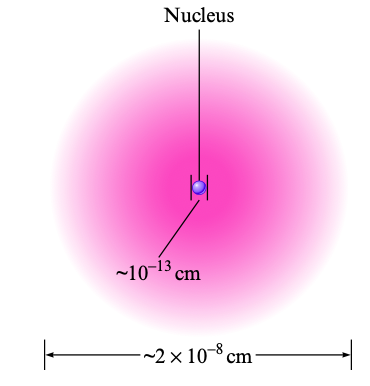
Different atoms have different chemical properties based on the number and arrangement of electrons. Atoms' 'bonding' ability is usually dependent on the number of electrons in the valence shell (outermost shell), which we will examine further in the future.
Atoms' identity is based on the atom's number of protons, or atomic number. Any two atoms with the same number of protons will be part of the same element. Any two atoms with different numbers of protons will be part of different elements.
An atom's symbol can be written in the form \({}_{\text{Atomic number}}^\text{Mass number}\text{Element}\). The atomic number is the number of protons the atom has, the mass number is the mass of the atom (usually number of protons + number of neutrons), and the element name is the symbol of the element (H for hydrogen, F for fluorine, etc.).
Molecules and Ions
Atoms are held together by chemical bonds. There are a couple different types of chemical bonds, and the first type of bond is called a covalent bond. In covalent bonds, atoms share their electrons, making them 'stuck' to each other. In the other type of bond, ionic bonds, atoms completely exchange their electrons rather than sharing them. Since the electrons are exchanged rather than shared in ionic bonds, ionic bonds are weaker than covalent bonds.Once atoms are bonded together, the result is called a molecule. Molecules can be represented as chemical formulas, in which the element symbols are used with subscripts to indicate the number of each other (like in H2O) or in structural formulas, in which the individual bonds are shown by lines connecting atoms, as shown below.
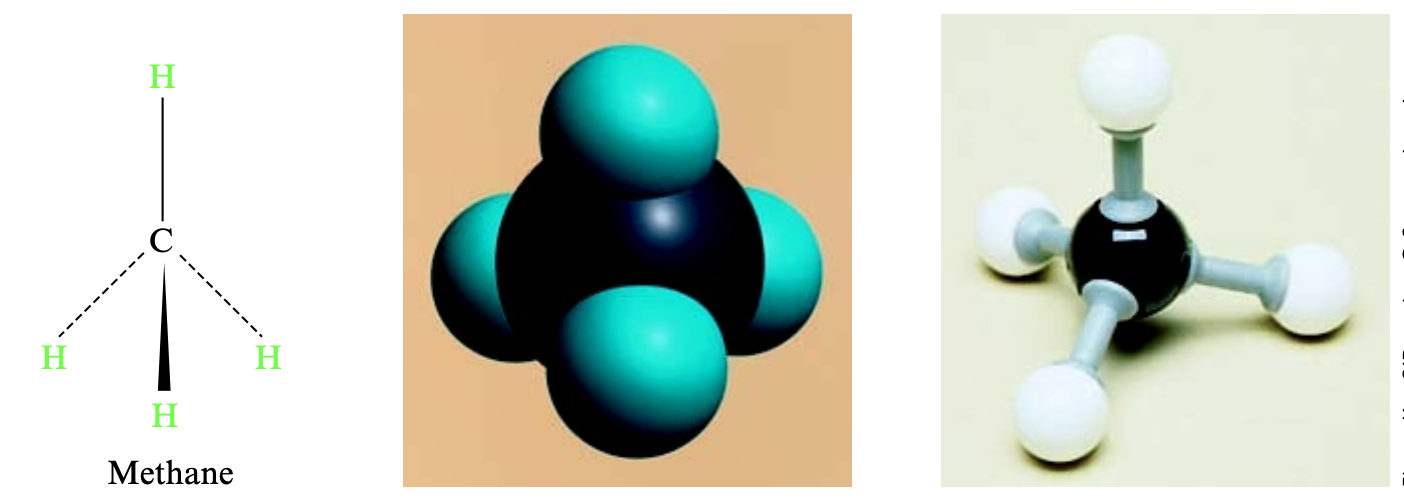
When an atom loses one of more of its electrons, it becomes positively charged and is called a cation. However, when it gains one or more electrons, it becomes negatively charged and it called an anion. The reaction to an ion can be represented as a formula:
The Periodic Table
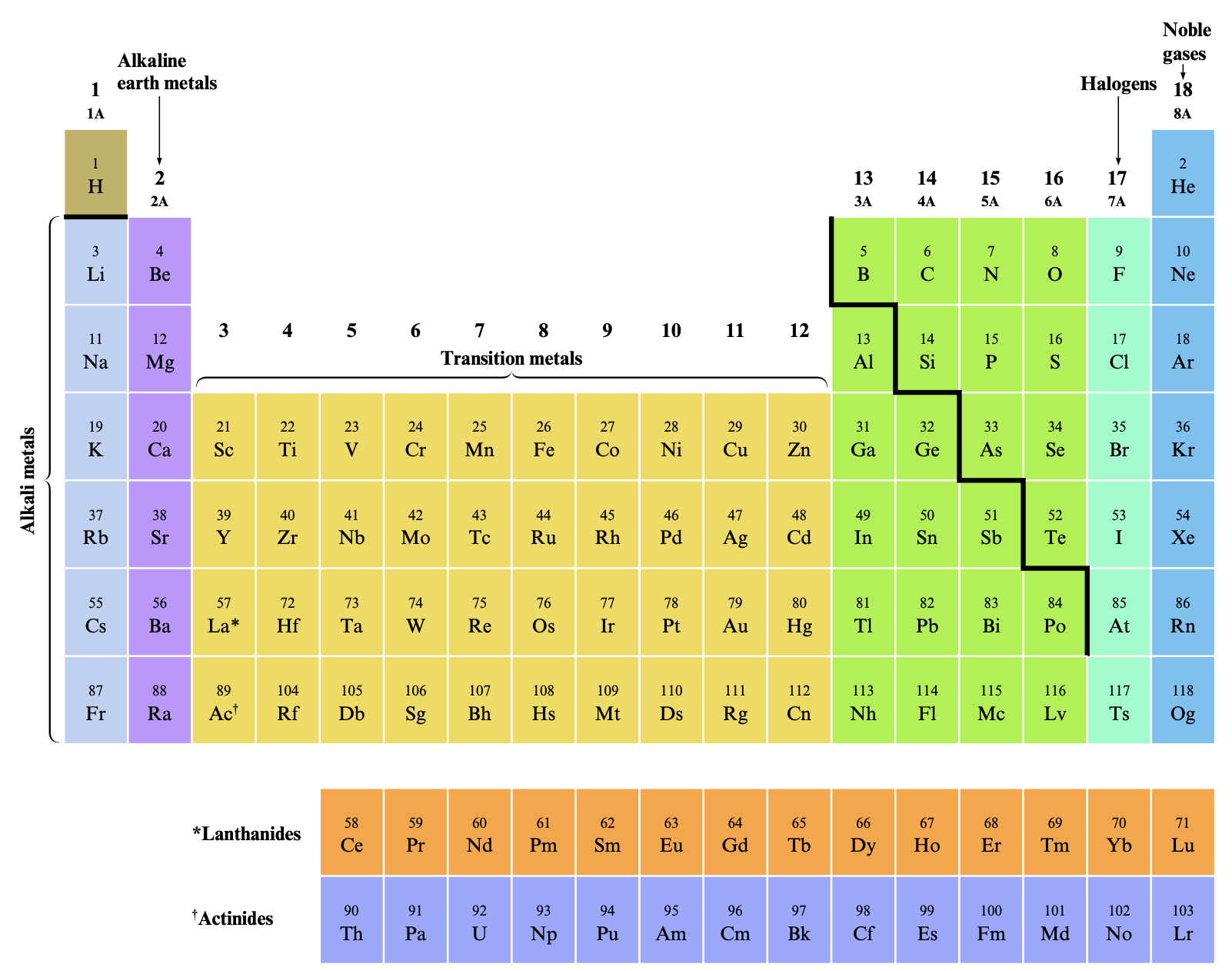
Most of the elements in th periodic table are metals with efficient conduction of heat and electricity, malleability (can be hammered into sheets), ductility (can be pulled into wires), and an often shiny appearance. Metals usually lose electrons and form positive ions when they react with other elements. Nonmetals are located in the top right of the periodic table and they tend to gain electrons when reacted with metals.
Elements in the same vertical columns have the same number of electrons in their outermost shells. Each column is called a group, or family, and all the elements in each group have similar chemical properties. The most recognized groups are alkali metals, alkaline earth metals, halogens, and noble gases. Halogens all form diatomic molecules with themselves. They cannot exist by themselves as a singular atom. Some of the halogens are fluorine, chlorine, bromine, iodine, and astatine. Noble gases like helium, neon, argon, krypton, xenon, and radon have full outer electron shells and are relatively inert (they don't react very much with other elements).
The horizontal rows in the periodic table are called periods.
Naming Compounds
Chemistry has thousands of compounds with different elements, so it is essential to understand how to name them in order to converse with others about experiments and research involving chemistry. Although most of the naming conventions can be described as a set of rules and is largely intuitive, it does require a modest amount of memorization to master naming. Let's go through the categories and the naming for each other explained in a simple bullet point list with examples:- Binary Compounds - Compounds composed of two elements
- Binary Ionic Compounds
- Consist of positive cation followed by negative anion. Cation is always named first and anion second.
- Cation + Anion + -ide
- Ex: NaCl -> Sodium Chloride, KI -> Potassium iodide, CsBr -> Cesium Bromide
- Some atoms can form more than 1 ion, for example iron can form either Fe2+ or Fe3+. In this case, the charge on the cation must be specified.
- cation(roman numeral charge) anion + -ide
- Ex: FeCl2 -> iron(II) chloride, FeCl3 -> iron (III) chloride
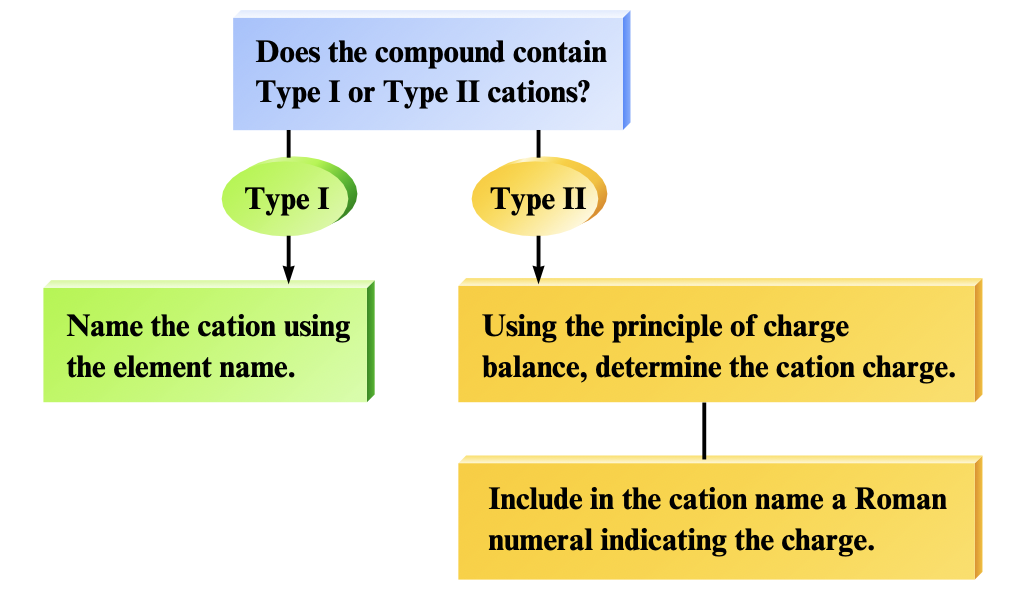
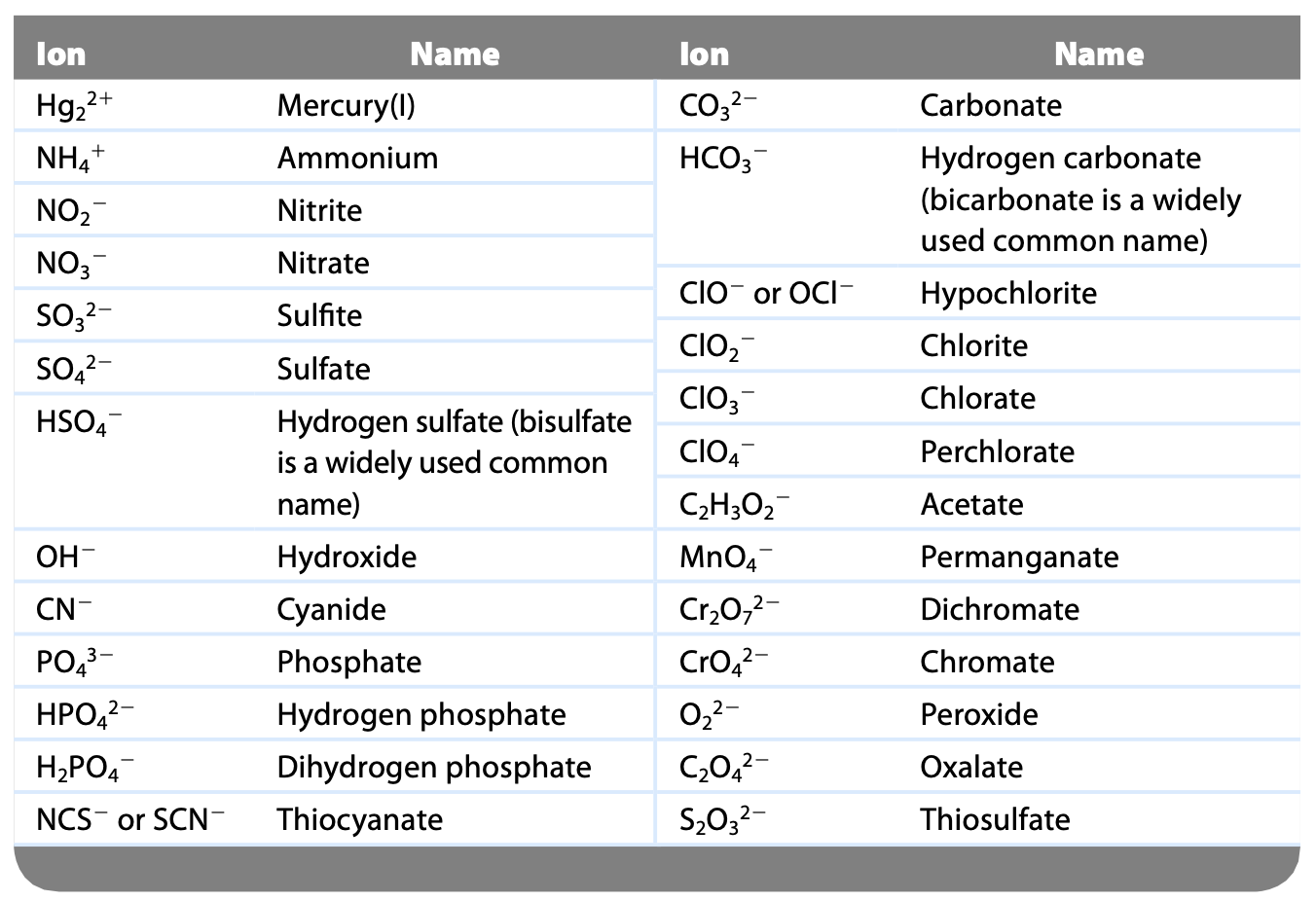
- Binary Covalent Compounds
- (Di, Tri,...) + first element + (mono, di, tri,...) + second element (in form of an anion)
- The prefix is only used on the first element if there is more than one atom. For example, CO is carbon monoxide, not
monocarbon monoxide - Ex: N2O -> Dinitrogen monoxide, NO -> Nitrogen monoxide, NO2 -> Nitrogen Dioxide, N2O5 -> Dinitrogen Pentoxide
- Keep in mind that for water (H2O), ammonia(NH3), and hydrogen peroxide (H2O2), the formulaic names are never used. They are simply called 'water', 'ammonia', and 'hydrogen'.
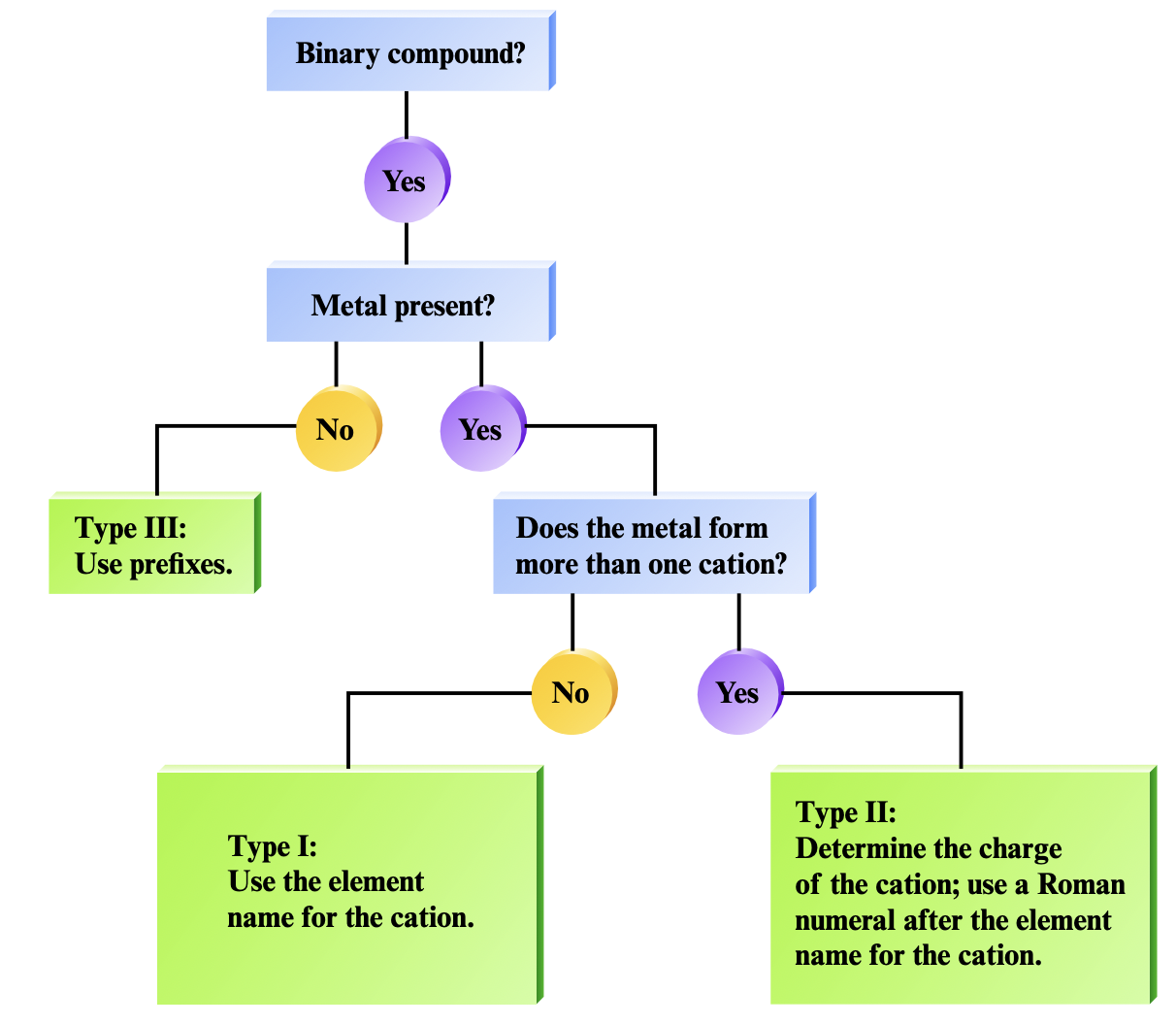
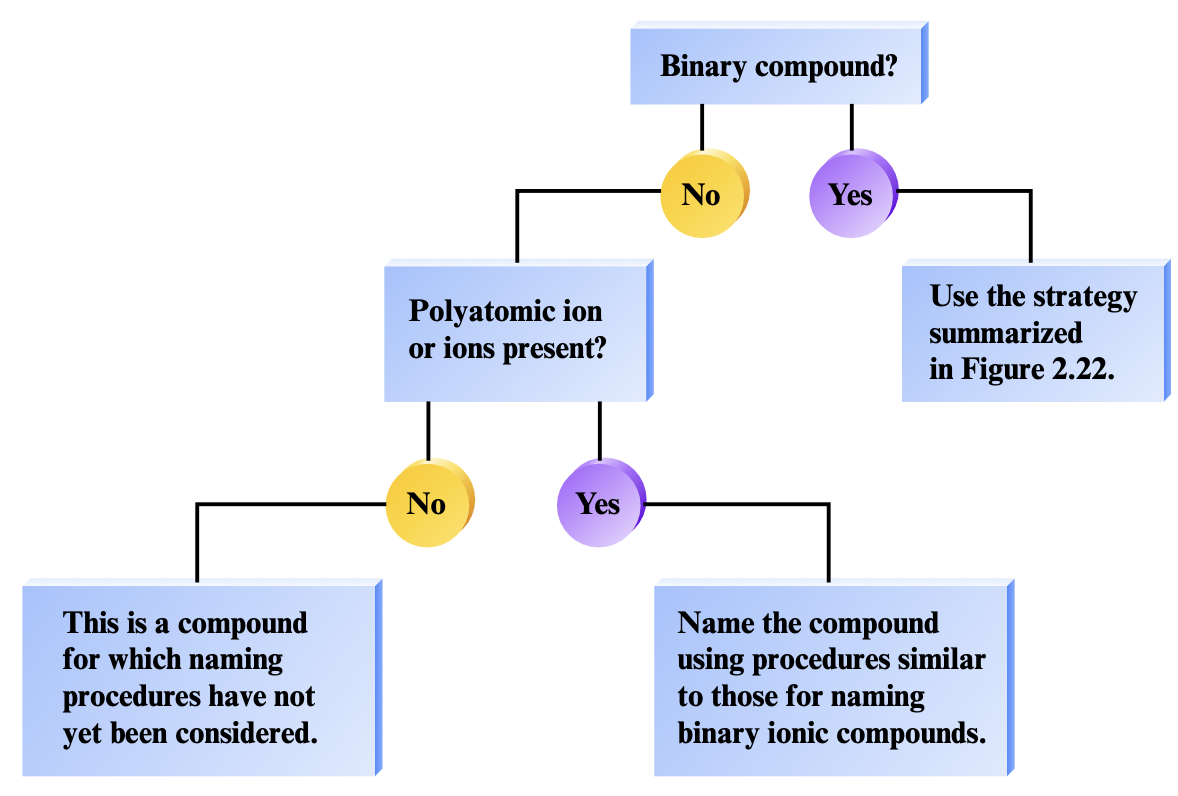
- Acids
- If the anion ends in -ide, the acid has the prefix hydro- and the suffix -ic. Ex: HCl -> Hydrochloric Acid, H2S -> Hydrosulfuric Acid
- If the anion ends in -ate, there is no hydro and the suffix -ic is added to the root name. Ex: H2SO4 -> Sulfuric acid, H3PO4 -> Phosphoric acid
- If the anion ends in -ite, follow the same rule as above but instead of -ic, the suffix is -ous. Ex: H2SO3 -> Sulfurous acid, HNO2 -> Nitrous acid
